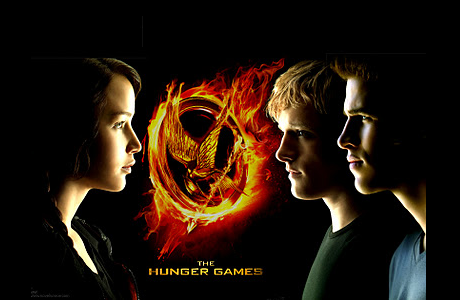The Hunger Games is not another Twilight Saga, not in any way, shape, or form. For one thing, the female lead is a strong, resilient character who doesn’t lust after the stoic aid of a glitterball ‘vampire’, nor do her adolescent affections drive the franchise forward.
Based on the first young-adult novel of Suzanne Collins’s 2008 best-selling trilogy, The Hunger Games isn’t particularly new in concept, but manages to create a wonderfully vibrant pastiche, featuring strong imagery and effective satire of a world obsessed with violence and the impact of reality TV.
For those that have read the novel, many will find the movie, directed by Gary Ross of Seabiscuit fame, to be remarkably faithful, capturing the beauty of the coveted ‘Capitol’ city, displaying a kaleidoscope of quirky designs, colourful arrangements, and grandiose, towering structures. On the other side of the spectrum, there is the unfaltering brutality of the war-torn nation, which annually watches as 24 children, or ‘tributes’ (aged 12-18), are flung into a computerised arena and forced to murder each other until just one stands victorious.
For those new to this post-apocalyptic dystopia that Collins has created, the plot revolves around 16 year old Katniss Everdeen (played by the sublime Jennifer Lawrence, channeling every aspect of her Oscar-nominated turn in Winter’s Bone), a resident in District 12 of the nation of Panem (a menacing futuristic vision of North America post-war). Each year, the ‘Reaping’ will take place and one boy and one girl from all 12 Districts will be chosen to compete in that year’s Hunger Games. After Katniss’s sister, Primrose, is reaped, our heroine takes centre stage, fiercely volunteering in the place of her younger sibling, and she and the male tribute, Peeta (played by Josh Hutcherson, a performance that hits back at his critics) are quickly whisked off to the Capitol to begin their training.
There is nothing bland about The Hunger Games, and each second of screentime is used to great effect, whether it be the scene meticulously depicting Katniss’s supreme hunting ability, or the pure, unadulterated joy and intent on the faces of those who reside in the Capitol, free from the terrifying apprehension of the Reaping. Exposition is never spoon-fed; Ross respects the intellect of the audience, efficiently allowing us to piece together his jigsaw by showing us, rather than telling us (for the most part).
The Hunger Games may be taken as a literal understanding that outside the gluttonous Capitol, each District is repressed by poverty and despair, an image certainly fitting to District 12, a place completely devoid of colour, and where food such as bread is a rare and wonderful treat. Though neither Collins nor Ross go into much detail about the Capitol in this outing, its self-degradation from consumerism and over-indulgence in a life of lavish luxuries are hinted at on occasions, painted in the inhabitants’ faces, prevalent in their need for mindless entertainment. In a world dominated by Big Brother, artificial thrills are generated from behind the scenes by head gamemaker, Seneca Crane (an ignorant, yet assured, Wes Bentley) and whilst teenagers slaughter each other, those outside the arena view it as nothing but a mere game on which they are able to bet on, invest in competitors, alter the Games to their liking, and care little about mundane topics such as ethics and morality. There is no line to cross here.
Though the novel sticks closely to Katniss (it’s written in first person), the film doesn’t waste its talented supporting cast, each of whom embrace their role wildly, bringing the words to life with zest, ambition, and strong individuality. Woody Harrelson as District 12 mentor Haymitch is particularly memorable, playing his character with slightly more warmth and humour than his literary counterpart, but his affection for Katniss when he recognises her ability and her gutsy intent is never downplayed. Elsewhere, Elizabeth Banks is blissfully unaware and bubbly as Capitol appointed District 12 representative, Effie Trinkett. Lenny Kravitz is the kind-hearted stylist, Cinna, whose goal is to help Katniss in making an ‘impression’, and Donald Sutherland shows hints of his ruthless leadership as the nation’s leader, President Snow, a role that, as the final scene suggests, will loom larger in the following films.
The Hunger Games is an intense affair, dominated by raw emotion and brutal action. The violence is toned down through quick-fire cuts and editing, perhaps to accommodate a larger audience, but the movie is resoundingly bloody, particularly the first scene inside the arena where blades, swords, knives and arrows are wielded, culminating in disturbing shots of lifeless children lying bloodied and battered whilst others rush around, no time to think about what’s right and what’s wrong. It caters to those going in fresh-minded and will satisfy those with high expectations. It’s a film unlike any other, and though it borrows heavily from other works, it’s a postmodern success, kept fresh by creatively minded architects, bright performances, and dazzling displays of refined popcorn-entertainment. A must see.

